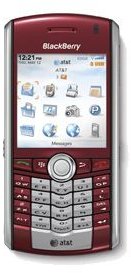Instant Messaging History: How the IM Came to Be What it is Today
Instant Messaging’s Predecessors
Before instant messaging really began, in the 1960s, users on a single computer could communicate to one another. A program, Compatible Time Sharing System (CTSS) manipulated a computer’s time features to allow multiple users to complete tasks at more or less the same time. This feature was only an illusion, as the program scheduled times for each user and task, but allowed it to appear as though work was being completed simultaneously. This allowed users to communicate with one another.
In the 1980s, online bulletin boards became more commonly used, and the first “chat’ programs began to appear. While online bulletin board systems were increasingly popular, and they allowed individuals to share recipes, files, and believes, this wasn’t a medium that allowed users to interact directly with one another. PLATO was a program developed in the 1970s featuring networked computers that many students would use to chat with one another. This system evolved to become Linux/Unix’s “Talk” in the 1980s and by the end of the decade and the beginning of the 1990s, another program “Quantum Link” appeared on the scene for the Commodore 64 and 128 computers.
Quantum Link (Q-Link) was a program that allowed users to dial in via modem from their home computers and interact with other Q-Link subscribers. There were games like checkers and hangman, email, chat, news, and more, as well as a rudimentary instant messaging system. The instant messaging system in Q-Link would show users each character as it would be typed. In 1991, Q-Link became America Online.
Image Credit: morgueFile.com/dorne
Will the Real First Instant Messenger Please Stand Up?
While instant messaging has been around since the 1970s, instant messaging as we know it today has been around since 1996. ICQ, a program developed by the company Mirabilis, that assigned users a free number that they would then use to chat with other members. ICQ is still a very popular messaging system that integrates with social networking websites such as Facebook. ICQ considers itself to be a pioneer in instant messaging history.
America Online, Prodigy, and Compuserve
In 1997, instant messaging occurring in real time hit the Internet like a storm. America Online, Prodigy, and Compuserve were the three main internet service providers home users would subscribe to in order to get online. America Online provided its users with the ability to send and receive instant messages and chat messages, well, instantly, without the timesharing features that had been uses before. Prodigy and Compuserve followed suit, and soon a nation of computer users were quickly hopping online after work to talk to friends and strangers across the world. By 1998, America Online was performing well enough to purchase Mirabilis and ICQ. To this day, most IM programs follow the ICQ model.
AIM, Yahoo Messenger, MSN Messenger
In 2011, AIM, Yahoo Messenger, and MSN Messenger are the three most popular instant messaging programs. In addition, many social networking websites including Facebook, MySpace, CafeMom, and others feature instant messaging capabilities that allow connected users to interact with one another. Instant messaging has become so ubiquitous in its use that that not only do many films and television programs feature characters using instant messaging, but there has even been a film, Pulse created where ghosts contact victims through instant messaging. Modern instant messaging programs often allow users to share files, paste hyperlinks, and play games with one another.
Multi-IM Platforms Such as Trillian and Meebo
Trillian, Meebo, Pidgin’ and a handful of other instant messaging clients are to instant messaging as Outlook is to emails. These programs have been developed to allow users to connect to multiple instant messaging platforms and even some social networks. Some of these programs offer additional features including unique emoticons, games, and file-sharing capabilities. There is no doubt that in the history of instant messaging, that the creation of instant messaging clients has certainly made it much easier to keep track of contacts on a multitude of platforms a much easier task.
The Future of Instant Messaging?
What would a discussion of the history of instant messaging be without a brief discussion of what the future might hold for instant messaging? As it stands, webcams, voice chat, and conference calls are all features of modern instant messaging platforms including Skype. Instant messaging is quickly becoming a tool used by companies to provide customer support on issues from subscribing to cable services to returning an unwanted package. Companies often implement instant messaging to facilitate collaboration among team members. Finally, as this article is being written, new features and new uses of instant messaging are being innovated to become the next step in instant messaging history.
